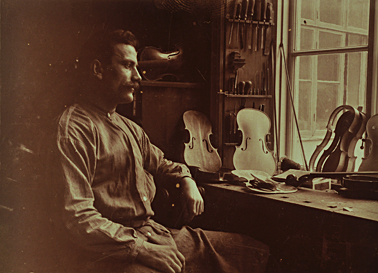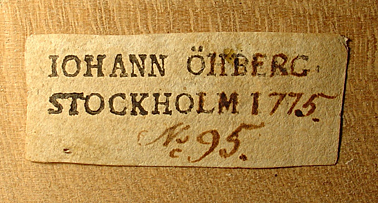The Guild of Swedish violinmakers – Traditions dating back to the 18th century
The first official concerts in Sweden took place in 1731 under the leader of the Royal Opera-House Orchestra Johann Helmich Roman, who as well was a talented violinist. As a result the music life in Stockholm and Sweden rised substantial and naturally the need of new instruments and repairs occured.
The earliest violinmakers in Sweden were self-taught and active during the end of the 17th century. Even the consertmaster Johann Helmich Roman himself confirmed for the Administrative Agency during the 1730s “how important it is for Sweden to recive a violin maker and repairer”
Sveno Beckman was the first to be send abroad to learn the craft and between 1760 until the beginning of the 19th century there were several educated violin makers in the capital. Among them Sveno Beckman and Johann Öhberg who were so called free-Masters and obeyed under the Hall-rules, at the time there were still too few violin makers to form a guild.
During the 19th century the craft suffered a clear drop and only one educated maker was active in the capital, the violin maker appointed by His Majesty the King Carl Wilhelm Otto who origined from a well known violin making family in Germany. In 1864 freedom of trade was introduced in the whole country and the guild system was abolished. Anyone could now practise a handicraft without having to apply for privileges which until then been so well connected to skills and education.
The year 1940 becomes a turn point with His Majesty the King’s announcement of Master certificates for handicrafts, and in conformity with the 18th century system, the regulations had strict requirements on education and skills. The regulations for the violin trade summarized to “Four years of apprenticeship with a Master of violin making, completing the journeyman exam, and thereafter four years working as a journeyman under the guidance of a Master of violin making.” In addition a test to show that “the applicant is well versed in all details of the craft, especially regarding restoration and repairing”
Between 1946 and 1990 we find only a few master violin makers in the country but during the years to follow the craft underwent a recovery. And in 2002, after 250 years, the educated violin and bow makers in Sweden united and formed - The Guild of Swedish Violinmakers.

Violinmaker Erik Lindholm, ca 1908.

